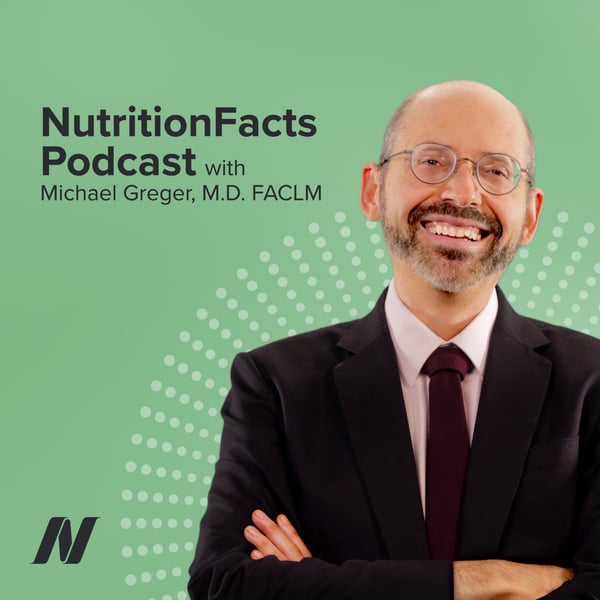Statins Part II
Nutrition Facts with Dr. Greger
[email protected]
4.8 • 3.6K Ratings
🗓️ 18 November 2021
⏱️ 12 minutes
🧾️ Download transcript
Summary
This episode features audio from The True Benefits vs. Side Effects of Statins and How Much Longer Do You Live on Statins?. Visit the video pages for all sources and doctor's notes related to this podcast.
Transcript
Click on a timestamp to play from that location
| 0:00.0 | Trying to stay healthy can seem like a full-time job sometimes, especially during a pandemic. |
| 0:07.0 | But I'm here to make that goal a little easier. |
| 0:10.2 | Welcome to the Nutrition Facts Podcast. |
| 0:12.8 | I'm your host, Dr. Michael Greger. |
| 0:15.6 | Today, it's part two of our series on statins. |
| 0:19.6 | And we start with a Mayo Clinic visualization tool that will help you decide if cholesterol-lowering statin drugs are right for you. |
| 0:28.0 | Physicians have a duty to inform their patients about the risks and benefits of whatever they prescribe. |
| 0:33.6 | However, physicians rarely communicate the absolute risk numbers, such as numbers needed to treat. |
| 0:40.0 | In other words, how many people are actually helped by the drug? |
| 0:43.6 | Numbers needed to harm, in other words, how many people are actually hurt by the drug or prolongation of life? |
| 0:50.0 | How much longer will it enable you to live despite patients wanting all this information? |
| 0:56.8 | If doctors inform patients only about the relative risk reduction, for example, telling patients a pill will cut the risk of heart attacks by 34%. |
| 1:04.8 | 9 out of 10 agree to take it. |
| 1:06.8 | Give them the same information framed as absolute risk reduction, though. |
| 1:11.2 | 1.4% fewer patients had heart attacks. |
| 1:14.4 | And those agreeing to take the drug drops only 4 out of 10. |
| 1:17.6 | And use the numbers needed to treat, and only 3 in 10 patients would agree to take it. |
| 1:23.6 | So if you're a doctor, and you really want the patient to take the drug, which statistic are you going to use? |
| 1:30.4 | The use of relative risk stats to inflate the benefits and absolute risk stats to downplay any side effects has been referred to as statistical deception. |
| 1:41.2 | But you can see how easily you could manipulate people if you picked and chose how you were presenting the risk in benefits. |
| 1:48.2 | So ideally, you'd use both the relative risk reduction and absolute risk reduction stats. |
| 1:55.0 | In terms of benefits, when you compile a bunch of stat and trials together, it looks like the relative risk reduction is 25%. |
... |
Please login to see the full transcript.
Disclaimer: The podcast and artwork embedded on this page are from [email protected], and are the property of its owner and not affiliated with or endorsed by Tapesearch.
Generated transcripts are the property of [email protected] and are distributed freely under the Fair Use doctrine. Transcripts generated by Tapesearch are not guaranteed to be accurate.
Copyright © Tapesearch 2025.

